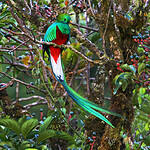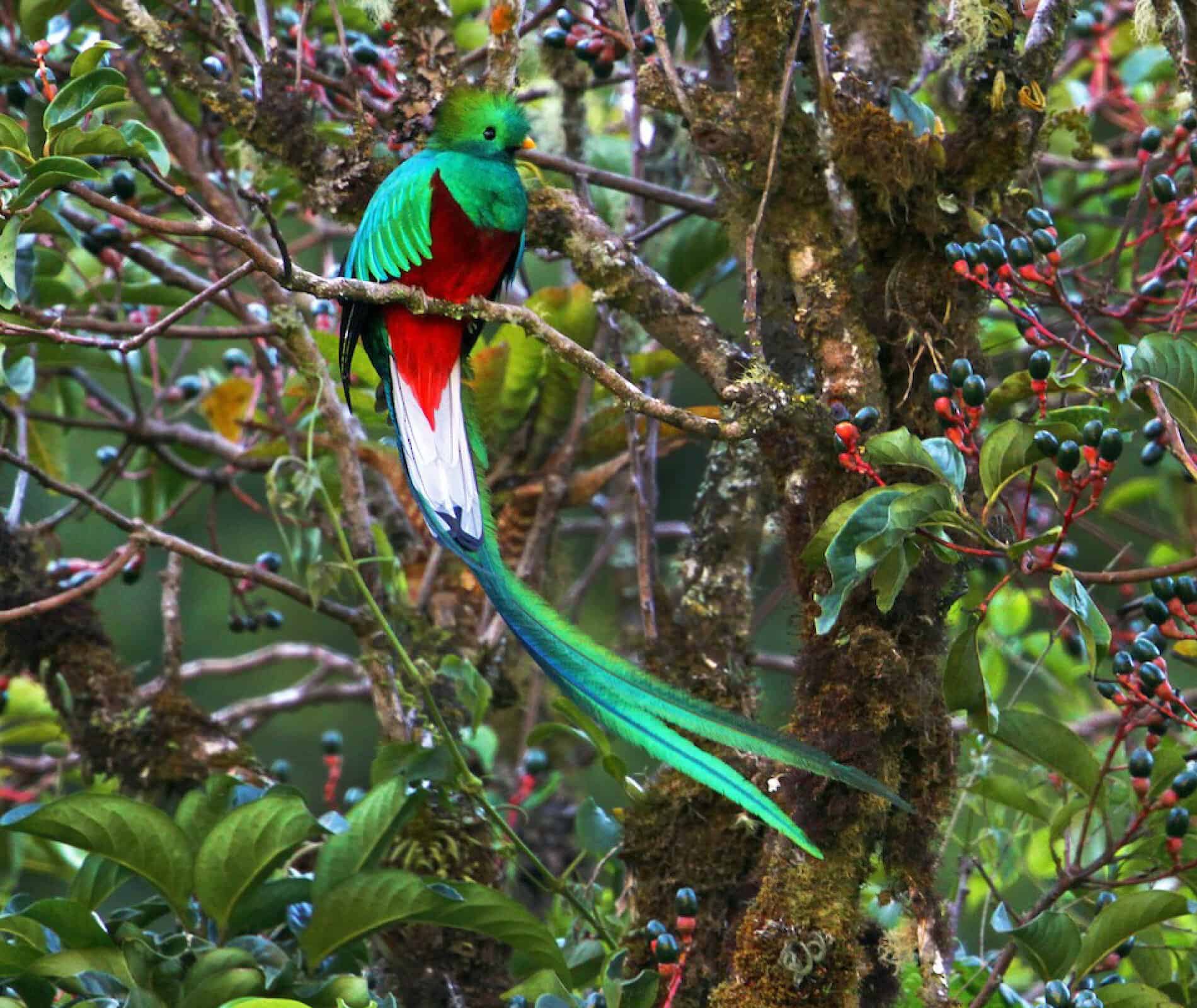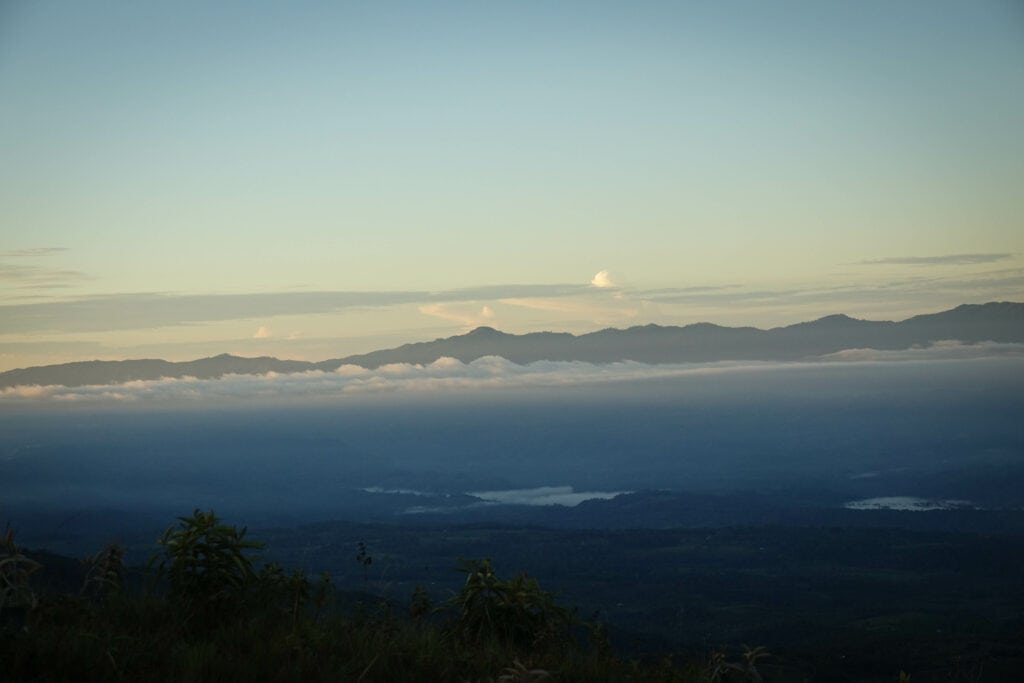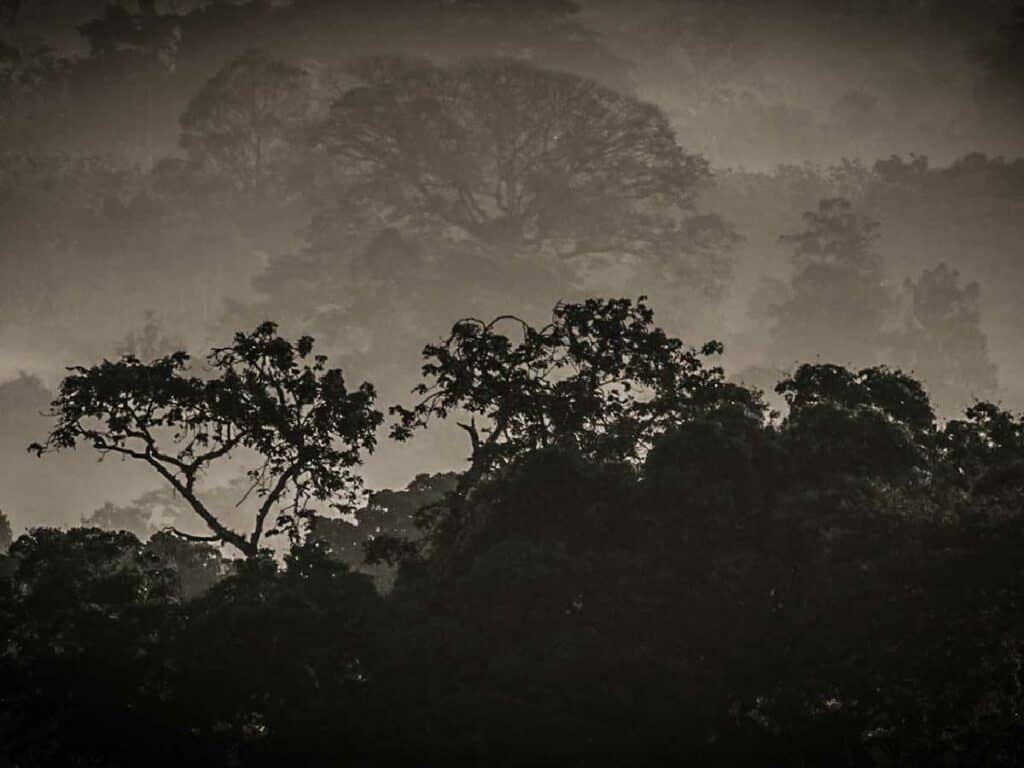The Quetzal in Costa Rica holds great significance, both ecologically and culturally, as it serves as a symbol with which all bird-loving Costa Ricans identify. It is included in the so-called charismatic species list.
The Quetzal (Pharomachrus mocinno mocinno) belongs to the Trogonidae family, which includes birds with stunning green, red, bluish, and yellow plumages. The male’s body can measure up to 40 cm with a tail length of up to 80 cm. The female has a more greenish plumage and lacks a red chest.
With its long tail, iridescent plumage, and elegant flight, the quetzal was highly revered by Ancestral Mesoamerican cultures, where it was considered a sacred animal, It symbolized life, fertility, and abundance. In some countries like Guatemala, it was historically used as currency. One of its often overlooked roles is as a significant seed disperser.
Exploring the habitat of the quetzal in Costa Rica
The quetzal is an endemic species to Mesoamerica, with Belize being the only country in this region where it is not found. The cloud forest of the highlands is its natural habitat. Costa Rica, by sheer geographical luck between the Tropic of Cancer and the Tropic of Capricorn, and the presence of two coastlines (Caribbean and Pacific), is abundant in such spaces.
A total of 51 species of regional endemic birds are recognized in these highlands. In Costa Rica, there are several accessible areas to discover the wonders of the cloud forest, especially for birding:
• Guanacaste Volcanic Range,
• Tilarán Volcanic Range (Monteverde),
• Central Volcanic Range,
• Talamanca Range (Cerro de la Muerte Massif, La Amistad International Park).
There are specialized tours and guides all across this area to spot the quetzal.
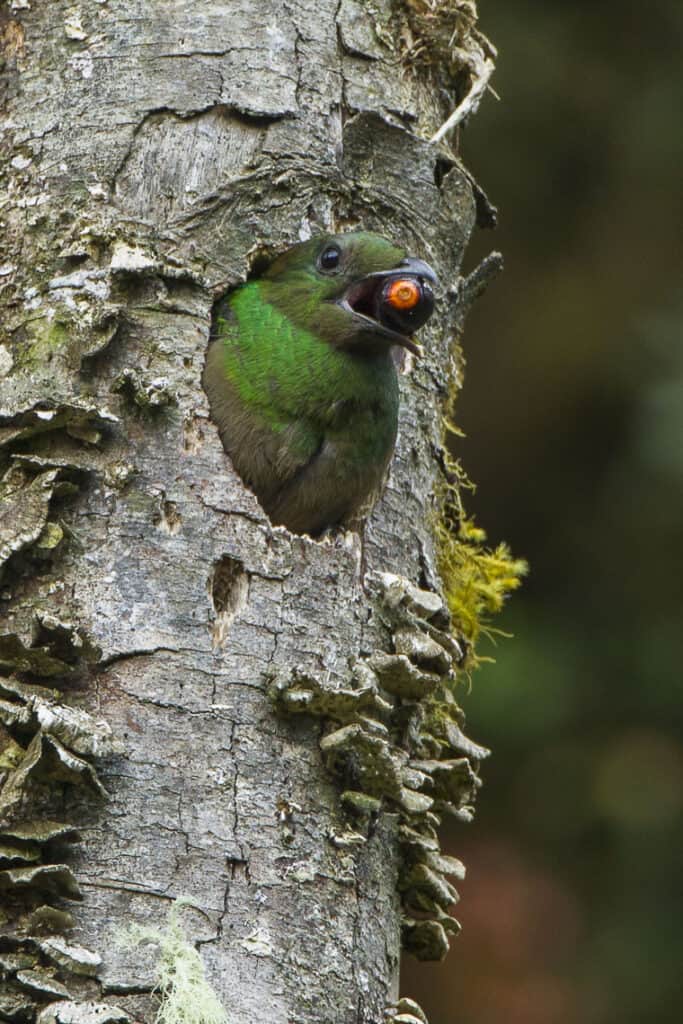
Reproductive and migratory cycle
The quetzal reproduces once a year. The reproductive cycle is from January to June, and its migration is from July to December. Their migration is classified as altitudinal, meaning it migrates from one place to another, temporarily and at different altitudes. These phases are not exact or synchronous in terms of time or geography.
Interestingly, these phases can be identified by the distinct calls they make.
During the breeding season, the male becomes social and is usually seen in groups of two or three. To court, males soar above the forest canopy approximately 30 meters and then dive in free fall, impressively landing back in the group. They developed this behavior just to impress their future mates. This behavior is rare after April.
Both parents take turns incubating the eggs for approximately 3-hour periods. The female lays one or two eggs, with a difference of one or two days if it’s two. Quetzal chicks are born completely blind and naked, but within two weeks, they are covered in their first feathers. The first green feathers appear on the back of the neck when they are close to leaving the nest, which happens around 21 to 28 days after hatching.
Quetzal chicks are born completely blind and naked, but within two weeks, they are covered in their first feathers.
To encourage them to leave the nest, parents stop feeding them. They also encourage them to leave the nest by vigorously flapping their wings in front of them. Typically, their first flight is a total failure, and they crash to the ground. After this, the parents guide them to climb back onto the branches of other trees and try again.
Migration
The second phase in the quetzal’s annual biological cycle is altitudinal migration. It’s called so because it descends from its nesting place (2500 mts-1400 mts) to lower forests (800 mts-1400 mts). It has been observed that not the entire population migrates, and this migration occurs individually. The origins of this migration have not been yet discovered. Finally, at the end of the migration, quetzals reunite with their previous partners.
Threats and conservation
In countries like Mexico and Guatemala, the quetzal is classified as an endangered species, but not in Costa Rica. Thanks to the creation of conservation areas and environmental policies, its population is healthy in terms of reproduction, and it’s not classified as a species in danger of extinction.
Quetzal watching: A traveler’s guide
The best time to spot the quetzal in Costa Rica is during its breeding season, from mid-February to July. During these months, both laurel and wild avocado trees bear fruit, which are the quetzal’s favorites.
- Quetzal National Park
- This protected area is located 76.5 km from the capital city. Several species of flora and fauna typical of the Central American region can be found here. Additionally, you can observe other local birds such as hummingbirds, trogons, and tanagers. It is mostly visited during the first months of the year. It is a paradise for bird watching.
- San Gerardo de Dota
- It is a town located 88 km south of San Jose. It is also one of the favorite places for bird-watching enthusiasts, as around 200 species can be sighted here, including woodpeckers, fruiteaters, curassows, and quetzals. In this place, visitors can choose from a variety of routes through which they will encounter breathtaking landscapes.
- Cañon del Guarco
- Located one hour and a half from San José downtown.
Quetzal and Costa Rican Pygmy-Owl can be watched. Los Robles is a very nice place to look for these species.
- Located one hour and a half from San José downtown.
- La Amistad International Park
- Located in the south of the country, there are some spots to look for the Quetzal
Las tablas, Biolley, La luchita,
- Located in the south of the country, there are some spots to look for the Quetzal
You also can find tours in the region on our tour shop page
For these birdwatching outings, it is recommended to:
- Avoid disturbing the birds or exposing them to any danger.
- Avoid the use of lighting, flashes, or bird call recordings to attract their attention.
- Inform the park rangers that birdwatching activities will be carried out.
- Limit photography activities, not exceeding time limits, and do so quietly.
- Minimize your presence by not leaving trash behind or disturbing the environment.
Ref: Solórzano S. La historia natural del quetzal y sus perspectivas en conservación, UNICASH https://www.researchgate.net/publication/378491907_La_historia_natural_del_quetzal_y_sus_perspectivas_en_conservacion

